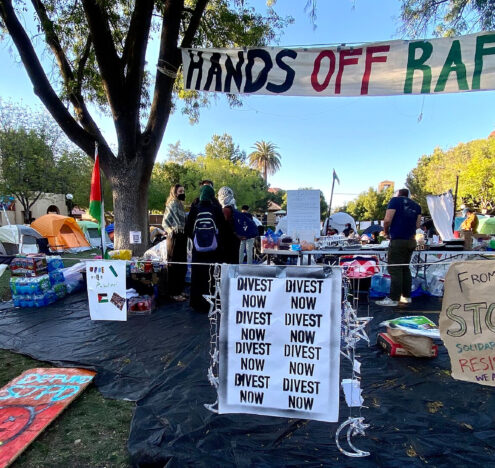Growing tension between the United States and China is increasingly becoming the key factor shaping United States foreign policy not only toward the East Asian giant, but also its relations with other countries and regions. Perhaps this is most evident in Latin America and the Caribbean — a region often referred to as the US’ “backyard,” but that in recent history has been ignored.
Analyses of how the United States can “outcompete” China in the Americas and the opportunities this rivalry presents for the region often focus on economics, security, and misinformation. However, the impact of the US-Chinese rivalry on Hemispheric affairs is beginning to be felt within regional organizations. While Latin American and Caribbean leaders are desperate to avoid a new “Cold War,” Chinese engagement in regional organizations and the US response may provide opportunities for these countries to pursue their own interests.
The Americas have a long history of regional cooperation and efforts to build regional organizations. Shortly after much of the region gained independence, founding father Simon Bolivar hosted the Congress of Panama to develop mechanisms to support cooperation and integration in the Americas. By the turn of the 20th century, the region had established what has become the world’s oldest regional organization, the Pan American Union (which is now the Organization of American States, or OAS).
However, ideological differences, frustrations over US policy, debates over who was an “American” nation, and desires for regional leadership led to the proliferation of regional organizations. The overlapping mandates and memberships of organizations has limited the effectiveness of these bodies to address the challenges facing the region.
Growth of Chinese Engagement
China’s rise has had important ramifications for Latin America and the Caribbean. Chinese trade with the region boomed in the 2000s as Latin American raw materials fueled China’s growth. Today, China is the most important trade partner for many countries in the region.
At the same time, China provided loans and invested heavily in the region. As China’s engagement with the region blossomed, it also began to engage with regional organizations. In 1994, China became a permanent observer of the Latin American Integration Association and in 1998 joined the Caribbean Development Bank. Chinese engagement in regional bodies continued to expand in the 2000s, and China now is an observer, member, or engages with at least 19 regional organizations.
To streamline their engagement with regional organizations and leaders, China partnered with the Community of Latin American and Caribbean States (CELAC) — an organization that was created as a counterweight to US influence in regional organizations such as the OAS — to announce the creation of the China-CELAC Forum in 2014, which met for the first time in 2015.
Chinese influence in Latin America and the Caribbean has increasingly worried US policymakers — including Beijing’s increasing presence in regional organizations.
Through the Forum, China has made key announcements related to strategies with the region, managed its multilateral programming, and promoted a particular vision of Chinese cooperation with the region. In addition to the main forum, there are numerous subforums China uses to manage different dimensions of their relationship — from science and technology to defense to people-to-people exchanges. This multifaceted platform allows China to effectively shape its relationship with the region and provides the region with a space to collectively negotiate with China on an array of topics.
US Concerns
Chinese influence in Latin America and the Caribbean has increasingly worried US policymakers — including Beijing’s increasing presence in regional organizations. In fact, some US policymakers have harshly criticized regional organizations for their decisions to recognize Beijing over Taipei and have pushed legislation to limit Chinese influence in the Inter-American Development Bank (IDB).
The growing rivalry between China and the United States poses opportunities and challenges for Latin American and Caribbean officials — including within regional organizations. While Latin American and Caribbean leaders need to be cautious in how they approach China and the US-China competition, the existing regional infrastructure may provide opportunities to further their own agency in international affairs and gain from the rivalry.
In the past, Latin American and Caribbean leaders have been able to leverage engagement in regional organizations to improve their standing globally. For instance, Latin American leaders leveraged the United States at the Second Pan American Conference in 1902 to get invitations to a conference at the Hague and push for bans on military intervention to settle state debt. Likewise, leaders from the region leveraged US concerns over communism to push for a “Marshall Plan for Latin America” and the development of the IDB. Pulling on the rivalry and these lessons could provide opportunities for the region.
Important Opportunity
With Chinese and regional leaders poised to meet at the Fourth China-CELAC Forum later this year, there is a unique opportunity for them to position their relationships within regional organizations with both China and the United States.
While the plethora of organizations can create issues for effectiveness, having different bodies through which the region engages with China and the United States may provide an important opportunity to dissipate conflict within organizations while promoting US-Chinese competition to the benefit of the region. Leveraging the ability to forum shop between these bodies and using them to constrain the worst impulses of both the United States in the region can provide an opportunity to strengthen regional governance initiatives, create space for Latin American and Caribbean agency, and improve the position of the region in negotiating with both global superpowers.
The author received funding for this article and its accompanying report from the Jack D. Gordon Institute for Public Policy at Florida International University. For more on Chinese engagement in regional organizations, please read the full report here.





















